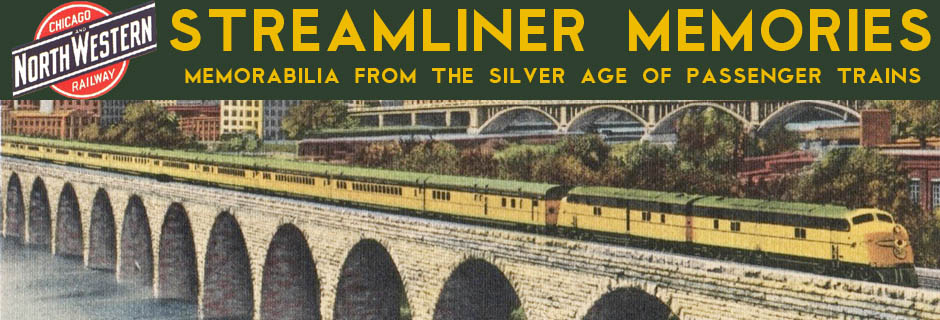The fifth Charles Russell menu in the series has a painting on the cover called Indian Women Moving. Russell painted at least two other paintings titled “Indian Women Moving Camp”; though this one lacks the word “Camp,” it obviously depicts … Continue reading
Category Archives: Western Star
Just like on the Empire Builder, the Great Northern offered postcards and stationery to passengers on the Western Star. This unused postcard shows Blackfeet Indians greeting Western Star passengers at Glacier National Park. Click image to download a PDF of … Continue reading
The Western Star’s coffee shop only had 20 seats, which didn’t allow for many customers over the course of a day. But the menu offered almost as many items as the a la carte side of the dining car menu, … Continue reading
Today’s Western Star menu features Buffalo Hunt on the cover, the same painting that was on the cover of the Empire Builder menu I previously posted. Although this dinner menu dates from 1953, it is different from the 1953 dinner … Continue reading
Today’s Western Star menu features Charles Russell’s painting, “Intercepted Wagon Train,” on the cover. It is a lunch menu that seems to be identical, on the inside, to yesterday’s Desperate Stand lunch menu. Apparently, one year did not see much … Continue reading
Along with the observation cars with Charles Russell paintings, the Western Star apparently inherited the Empire Builder’s Charles Russell menus. There were originally five observation cars in the series, with one more added for the Western Star, so there must … Continue reading
Because the Western Star was the Great Northern’s premiere train that stopped at Glacier Park, advertising for the train was directly connected with advertising for the park. The Great Northern had built and, until 1960, operated many of the hotels … Continue reading
When the Great Northern purchased equipment for a second transcontinental streamliner, it decided to retire the name Oriental Limited. This had been the railway’s premiere train from 1905 to 1929 and its secondary transcontinental from 1929 to 1931, when it … Continue reading
